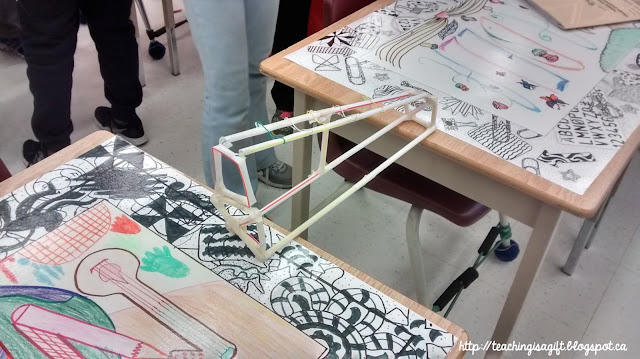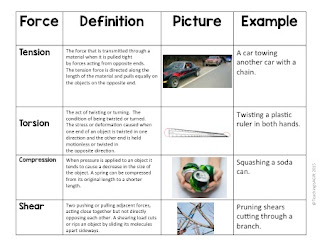I have blogged about using centers or stations for teaching science before. I have used this method as part of my elementary science and technology instruction for as long as I have been teaching (that happens to be 25 years this year!). Teaching a topic such as Forces Acting on Structures and Mechanisms (what doing what to what?) can be overwhelming to even the most enthusiastic teacher. There is a constant struggle to find the appropriate balance between teaching content and letting the students experience hands on experiments and investigations. Using centers to supplement your program will allow you to develop inquiry skills while still building student knowledge and understanding of content.
I chose to create stations for the topic Forces Acting on Structures and Mechanisms because I just didn't find that using the materials I had was working for my style of teaching, or for my students.
Why should you use centers?
According to the NSTA (National Science Teacher's Association) "The Station Approach is a method of instruction in which small groups of students move through a series of learning centers, or stations, allowing teachers with limited resources to differentiate instruction by incorporating students’ needs, interests, and learning styles. The Station Approach supports teaching abstract concepts as well as concepts that need a great deal of repetition. Stations can cover a single topic such as density, or several independent topics such as reviewing the scientific instruments. Most importantly, using stations can increase students’ interest, keep them motivated, and eliminate many behavior problems while teaching all those lessons that you know will help students learn and be successful." (Denise Jaques Jones, Science Scope, 2007)
I started using centers (or stations) when I first began teaching because I taught split grades and I wanted a cohesive way to deliver hands-on investigations to two grades simultaneously. I found that setting up bins filled with materials and instructions allowed ALL students to be working on science and technology at the same time, just not on the same content. It allowed me to move around, to observe, to trouble shoot, and to assess students as they worked. Students were engaged, and I wasn't worried about what the "other grade" was doing while I was delivering content one grade.
Now I use centers as a way to keep students engaged, and to utilize minimal materials. Although there are many great science and technology programs out there, most of the investigations, if done by the whole class at once require copious amounts of difficult to find and/or expensive materials. Using centers has allowed me to use far less materials, but all students get the benefit of using them.
Not all of the centers are as involved as the ones pictured above. Some centers have students reading about content, some have them matching vocabulary words with pictures and other ask them to analyze and apply what they know from their prior learning about concepts.
I have found that after some introductory lessons I am able to have the students work on the centers over a period of about two weeks. They record their work in a booklet format which I photocopy for them. After I have "checked" over the work they have completed in the booklet, my students create a final copy of their "notes" in a blank science book. They take great pride in their finished science notebooks when we are finished a unit.
I hope to complete more center based science and technology units this summer. Make sure you follow my store to receive updates as I upload new materials.














